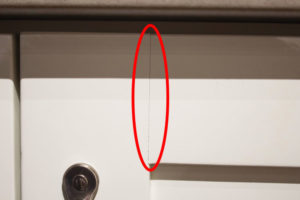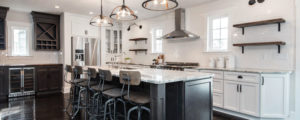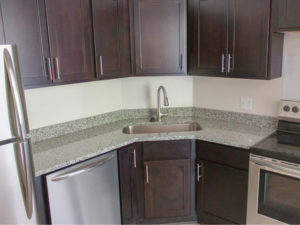How to Protect Your Investment in the Winter Months
By Ryan Horvath
Protecting your cabinets for winter is probably the last thing on your mind. But it shouldn’t be. The dry air and low humidity can cause changes in your cabinetry. It can even damage them if not addressed. This week’s blog is educating you on winter’s dangerous effects on cabinetry. I’ll also share some tips on how you can fix any issues you come across.
Keep Your Cabinets Looking Great
FUN FACT: YOUR CABINETS ARE ALIVE
Even after being cut down, wood is a living element. Wood has a hygroscopic characteristic. Hygroscopic happens when the wood is exposed to air. Wood will absorb or release moisture until it finds a balance. When it absorbs, wood will expand. When it releases moisture, wood will shrink. Moisture levels can also affect the wood’s structural properties. These include weight, dimensions, and strength.
ISSUES TO LOOK FOR AND HOW TO FIX THEM
When your furnace runs, it dries out your air and lowers your home’s humidity. Dry heat and low humidity will pull moisture from your wood cabinets. This will happen to a lesser extent on painted or stained finished cabinets. Because of the top barrier of finish, the release slows but doesn’t stop. The release of moisture can lead to shrinkage with your cabinets.
One sign of shrinkage is cracking along the joint line. As the door shrinks, the stiles and rails can start to separate. When it does, it will cause a joint line crack to form in the finish. This is more an aesthetic issue than a structural one. These joint line cracks are easy to fix using a wax fill stick. The wax fill stick allows the stiles and rails to bounce back. Below is an example of a joint line crack.
Click on the image to enlarge.
Gaps between your center panel and door frame is another issue. These gaps can be a sign of shrinkage and warping. If you’re noticing this, your home’s humidity levels are dangerously low. To fix this issue, consider buying a whole-house humidifier. These are relatively cheap with prices starting around $130 on Amazon. A standalone humidifier will also work. Just place it in the kitchen. As the humidity levels go up, the gaps should disappear. The doors should also return to their normal shape and size.
When a door shrinks, it can shift. The shifting can cause doors not to close like they use to. You can fix this issue by adjusting your hinges. Use a level and screwdriver to find the perfect fit.
THE WRAP-UP
Ideally, you’ll want to keep your humidity levels between 40 and 50% during the winter. This will help you avoid shrinking and joint line cracking. You should also keep your temperature between 68 and 72 degrees. You can watch temperature and humidity with a thermo-hygrometer.
If you like it toasty indoors during winter, be mindful of your cabinetry. If you notice a large amount of condensation on your windows, your humidity level is too high. The high humidity levels will cause your cabinets to expand. The easy fix is to lower your temperature and humidity. Protecting your cabinets for winter is easier than having to replace them. Just keep an eye out for any warning signs and make adjustments.
If you would like to sign up for the weekly Choice Cabinet blog, click on the button below!










